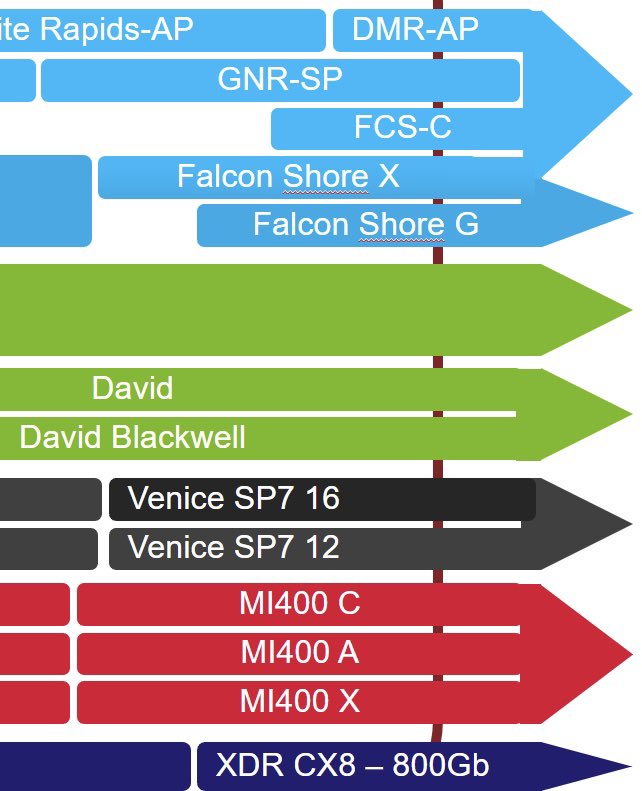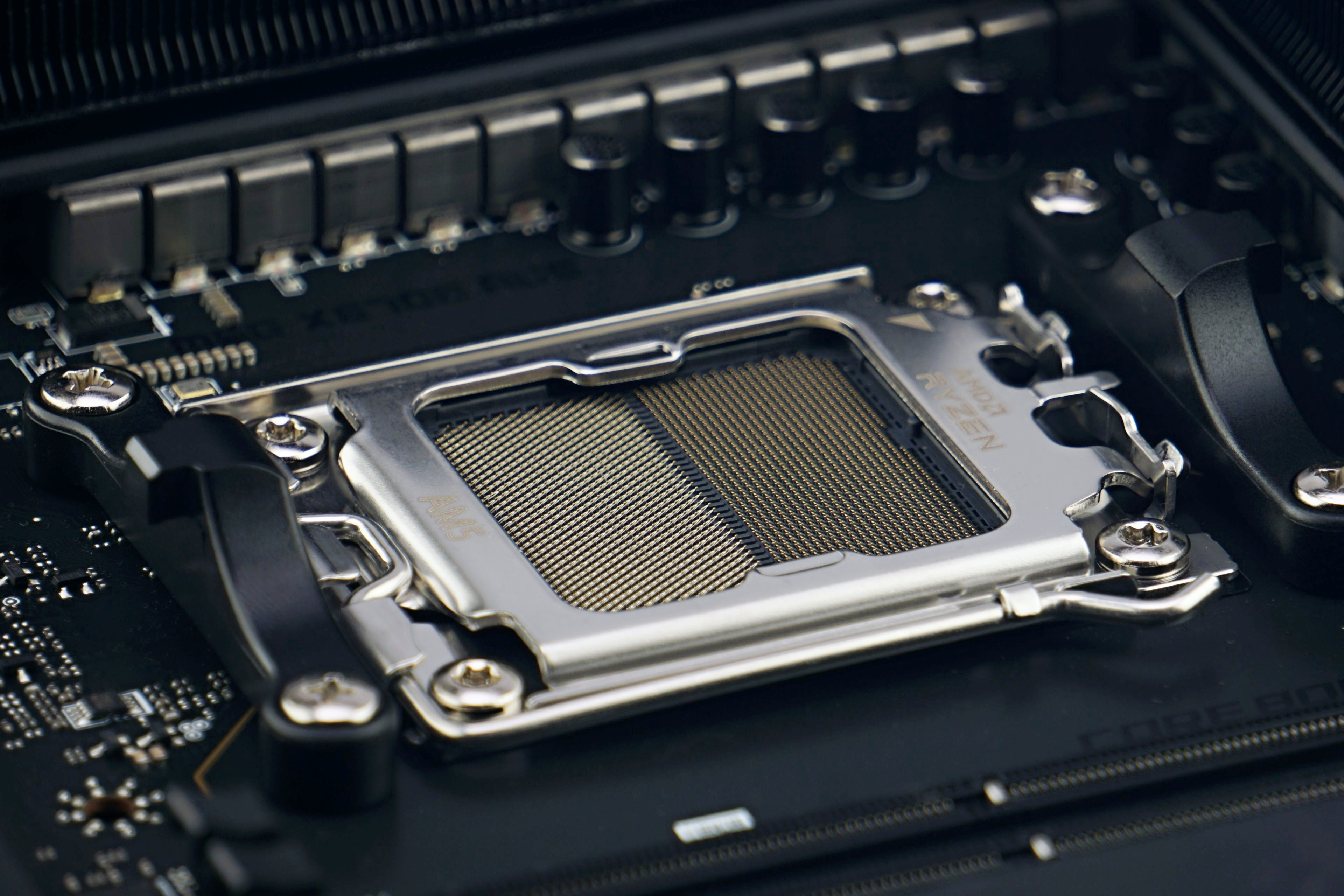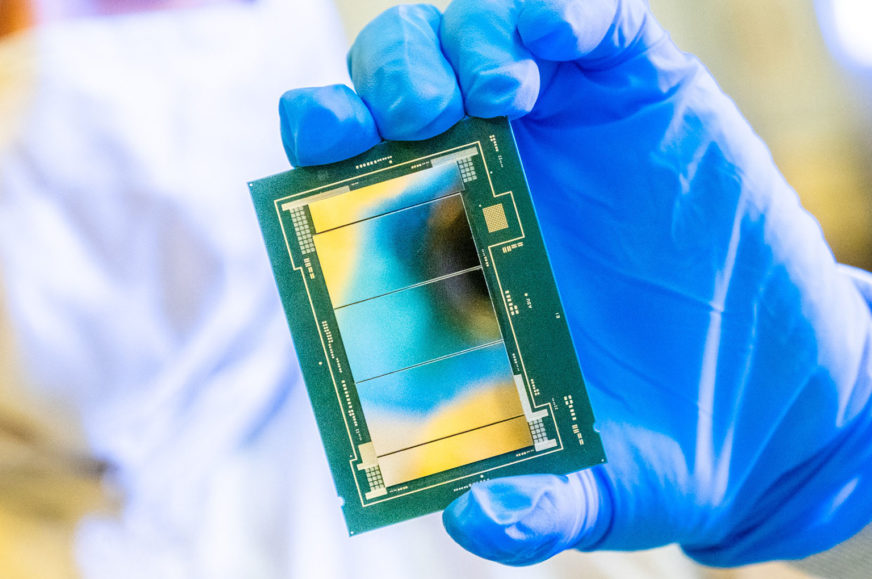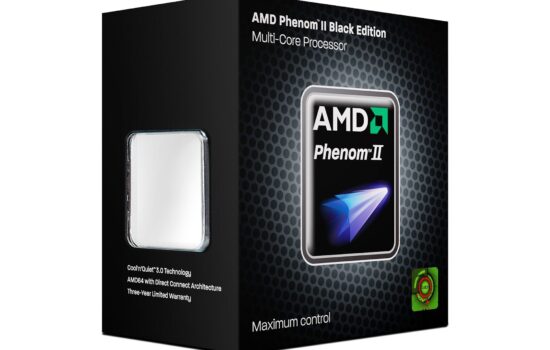Leaked document gives view of AMD, Intel and Nvidia server roadmaps
Last week, a roadmap (or rather a cutout of it) apparently coming from one of the manufacturers of servers and similar hardware that was showing the planned products of the major players – Intel, AMD and Nvidia – was made public on the internet by leaker YuuKi_AnS. It appears to be showing the plans for 2025 or 2026, so time still quite a bit far off and product generations following those that are to come to market now.
Intel will push high-performance Xeon AP processors in servers
According to this plan, Intel should have Granite Rapids processors on the market in 2025, which it recently showed publicly – these are CPUs composed of three CPU dies with two IO dies embedded on the sides. Its base version (GNR-SP) is likely to be released during 2025. The next generation codenamed Diamond Rapids should apparently replace them sometime in 2026.
Interestingly, Intel appears to be releasing an “AP” version of the processors sooner than the SPs. The APs should be high-performance models for supercomputers using a different larger socket, presumably representing essentially a fusion of two processors in a single package (as was the case with the original Xeon 9000 “Advanced Performance” processors). Granite Rapids-AP will be on the market sooner than the SP version, and Diamond Rapids-AP processors could actually be out before the end of 2025 according the roadmap, again ahead of the SP version.
Also in 2025, according to the roadmap, Falcon Shore Intel GPUs are expected to come out. Three types are listed, “C”, “X” and “G”. Falcon Shore or Falcon Shores was originally intended to be an XPU, a combination of a CPU and a compute GPU in one. Thus, version X may refer to an XPU, version G to a derivative dedicated GPU without a CPU component, and version C could be a related CPU-only design without the GPU element.

Nvidia’s next gen CPU
Nvidia should have a new generation of ARM processors in 2025, which according to the leaked document are codenamed David. Also on the roadmap is a combined processor binding both GPU and CPU in one package, presumably the successor to today’s Grace Hopper “superchip” (to use the words of Nvidia marketing). This successor will be named David Blackwell as expected.
This implies that the next-gen dedicated Blackwell compute GPU should be present in the lineup at the same time. But it’s possible that Blackwell will be unveiled or launched even as early as 2024. The roadmap doesn’t yet show anything following for 2026. According to the roadmap, Nvidia is also expected to release new 800Gb/s Infiniband XDR ConnectX 8 adapters (originally the product of Mellanox), these are due out during 2025.
AMD: MI400 and notably Zen 6 in 2025
For AMD, the document shows that a new generation of compute GPUs following the upcoming MI300 should come out in 2025. The roadmap lists these versions: C (a CPU-only product), X (a dedicated GPU, the letter code differs from Intel here) and A (combination of both, an “APU” in AMD lingo).

And now for the part most important for those of us who don’t work directly with servers and HPC hardware: The AMD processor section, which is actually the reason we’re writing about this leak. According to this document from YuuKi_AnS, AMD is planning to release server processors with the new Zen 6 architecture sometime later in the year 2025 (maybe mid-year, or Q3?). These are codenamed Venice and are said to come in two variants, “12” and “16”. These numbers could possibly indicate the number of memory controller channels, which is twelve for the current Epyc CPUs.
New socket
But the important thing is that both variants are supposed to use the SP7 socket, a new platform, instead of the current SP5 socket that the one that the Epyc 9004s with Zen 4 architecture are relying on (and SP5 should also be used by the Epyc 9005 generation based on Zen 5 architecture). This raises the question of whether a new socket will also be introduced for desktop Ryzen processors based on the Zen 6 architecture. For those, we can assume that they could probably also go on the market in the same year (2025) – perhaps as Ryzen 9000.
This will likely depend on the reasons why a new socket for server Epycs is planned in the first place. If it’s just to increase the number of memory channels, then Ryzen 9000 would probably not be affected and it could stay on the AM5 platform (and it’s possible that even today’s boards with A/B/X600 series chipsets could be upgraded to it). But if the Epyc 9006 CPUs are to introduce the SP7 socket due the fact that they will already be switching to DDR6 memory, then it’s possible that the desktop Ryzens with Zen 6 architecture will copy this move, and thus would probably get a new socket (possibly called AM6).

In that case, a socket change would be understandable: But of course, we can’t rule the reality will be uglier (we can think of a „dream“ scenario where the Zen 6 Ryzen still uses DDR5 memory, but AMD moves to a new socket for some reason anyway, which would then have a shortened lifespan because the arrival of DDR6 would soon force another socket change; hopefully this is not what will happen). Until now, Zen 6 was expected to come out too soon to employ DDR6 memory (and thus a new socket), but maybe that’s something that’s not so certain. So for now we’ll be on tenterhooks for some leaks showing the desktop roadmap, which could hopefully clarify the future prospects of the AM5 socket’s longevity.
Zen 6 details: Virtually unknown for now
The Zen 6 architecture should be an evolution of the Zen 5 core. AMD is now following a sort of pairwise cycle where it always releases a “new” significantly upgraded architecture in an odd generation (Zen, Zen 3 and now it will be Zen 5). This generation makes big changes and is more likely to result in significant leaps in performance. Then the following even-numbered architectures (Zen 2, Zen 4) are an evolution of the foundations developed in the odd-numbered generation, so the changes in them are somewhat less complex and far-reaching. Also, their development probably doesn’t take as long (but it runs in parallel with the development of the next new odd-generation architecture, so the spacing between releases doesn’t have to quite correspond to this).
According to this scheme, Zen 6 should be an evolution or an extension of Zen 5. So it may make a smaller splash than Zen 5 will. There are various rumors saying that Zen 5 could be a very significant advance in AMD’s CPU architecture, perhaps bigger than Zen 3 was. But so far it’s all vague and non-specific, so it’s probably still premature to talk about performance. The estimates of performance or IPC increases currently circulating are probably all either pure speculation or at least not accurate enough to enable predictions with reasonably narrow range of uncertainty. And to put it simply, we know even less about Zen 6. In general though, we can expect that these processors (possibly to be designated Ryzen 9000) should be significantly further ahead of the current Ryzen 7000 CPUs’ performance level.
Sources: YuuKi_AnS, Tom’s Hardware
English translation and edit by Jozef Dudáš
⠀











